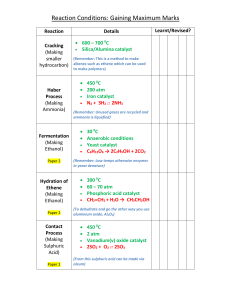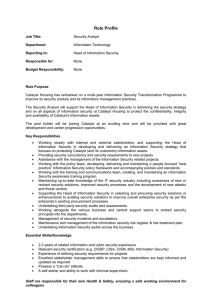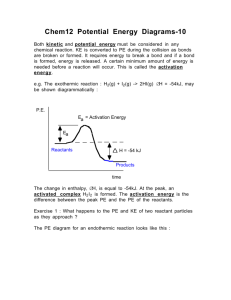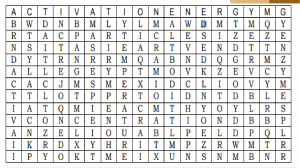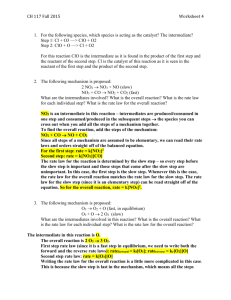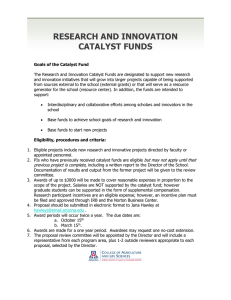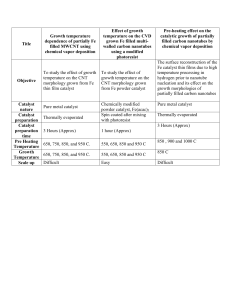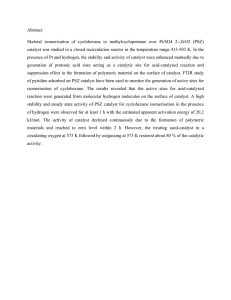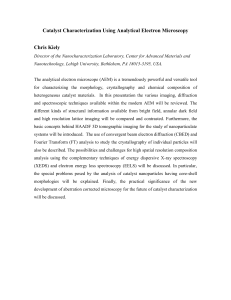Reaction Mechanism Examples
advertisement
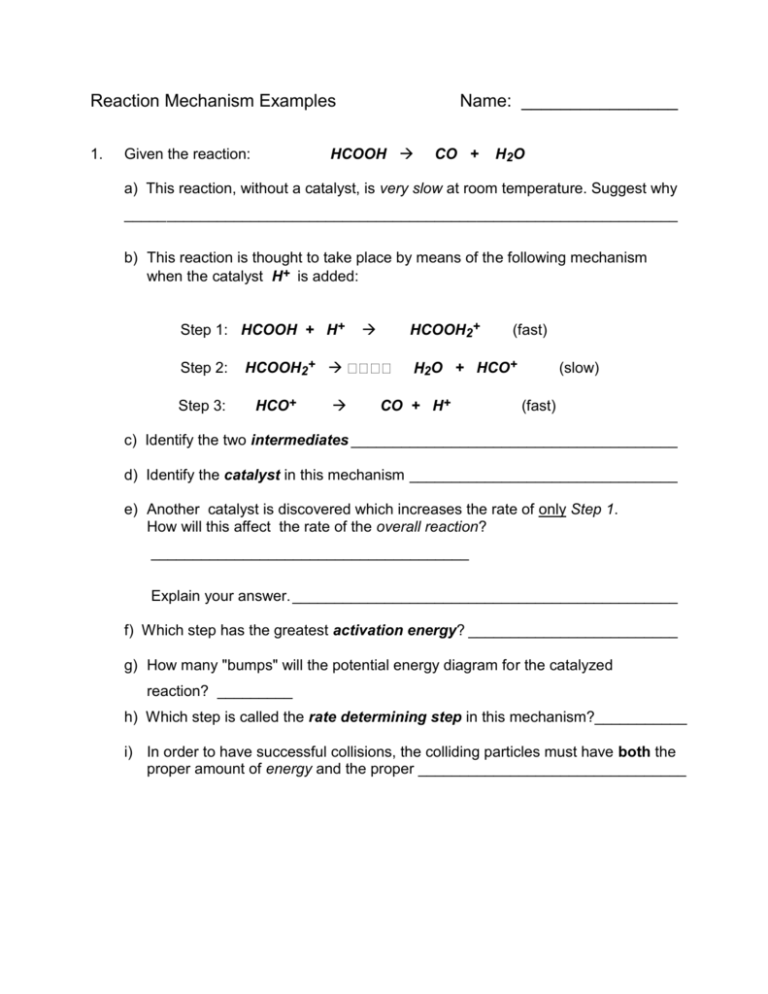
Reaction Mechanism Examples 1. Name: ________________ HCOOH Given the reaction: CO + H2O a) This reaction, without a catalyst, is very slow at room temperature. Suggest why _____ _____________________________________________________________ b) This reaction is thought to take place by means of the following mechanism when the catalyst H+ is added: Step 1: HCOOH + H+ Step 2: Step 3: HCOOH2+ HCO+ HCOOH2+ 2O (fast) + HCO+ CO + H+ (slow) (fast) c) Identify the two intermediates _______________________________________ d) Identify the catalyst in this mechanism ________________________________ e) Another catalyst is discovered which increases the rate of only Step 1. How will this affect the rate of the overall reaction? ______________________________________ Explain your answer. ______________________________________________ f) Which step has the greatest activation energy? _________________________ g) How many "bumps" will the potential energy diagram for the catalyzed reaction? _________ h) Which step is called the rate determining step in this mechanism?___________ i) In order to have successful collisions, the colliding particles must have both the proper amount of energy and the proper ________________________________ On the set of axes below, draw the shape of the curve you might expect for the reaction in this question. The overall reaction is exothermic! Make sure you get the "bumps" the correct relative sizes. Potential Energy Progress of Reaction 2. Given the following mechanism, answer the questions below: Step 1: O3 + NO NO2 + O2 (slow) Step 2: NO2 + O NO + O2 (fast) a) Give the equation for the overall reaction. b) What could the catalyst be in this mechanism? _________________________ c) What is an intermediate in this mechanism?_______________________________

